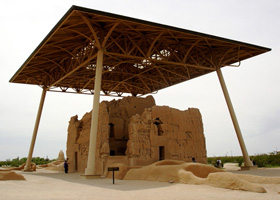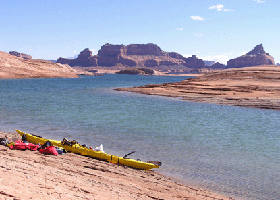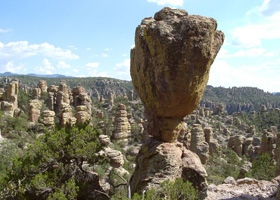- National Recreation Areas: Areas that have outstanding combinations of outdoor recreation opportunities, aesthetic attractions, and proximity to potential users. They may also have cultural, historical, archaeological, pastoral, wilderness, scientific, wildlife, and other values contributing to public enjoyment.
- National Monuments: Areas of unique ecological, geologic, historical, prehistorical, cultural, and scientific interest.
RELEVANCE
Studying existing national designations will help the town and residents to focus their efforts if pursuing a national designation, and to also understand some of the other attractions in the state of Arizona. Therefore, efforts towards the application process for the Woodland Lake Park Tract should be geared towards communicating both the assets which meet federal requirements and the national interest in the park tract.
The following three cases are National Recreation Area designations in Arizona. They are presented with the intent to examine the level of national interest in the natural amenities contained within each area.
 For over a thousand years, prehistoric farmers inhabited much of the present-day state of Arizona. When the first Europeans arrived, all that remained of this ancient culture were the ruins of villages, irrigation canals and various artifacts. Among these ruins is the Casa Grande, or "Big House," one of the largest and most mysterious prehistoric structures ever built in North America (From the National Park Service).
For over a thousand years, prehistoric farmers inhabited much of the present-day state of Arizona. When the first Europeans arrived, all that remained of this ancient culture were the ruins of villages, irrigation canals and various artifacts. Among these ruins is the Casa Grande, or "Big House," one of the largest and most mysterious prehistoric structures ever built in North America (From the National Park Service).
The Casa Grande Ruins was the nation's first archeological preserve, showcasing various archeological sites including remains of a walled village near the "Big House" and traces of other villages nearby.
The site features a visitors center, museum, book store, and other public facilities. Entrance fees are charged to access the area, and special archeological tours are offered.
 The Glen Canyon National Recreation Area offers visitors unique water-based recreational experiences encompassing over 1.2 million acres in Northern Arizona. The recreation area spans hundreds of miles from Lees Ferry, Arizona to the Orange Cliffs of southern Utah. The area provides scenic vistas, geologic wonders, and a panorama of human history in addition to recreational amenities.
The Glen Canyon National Recreation Area offers visitors unique water-based recreational experiences encompassing over 1.2 million acres in Northern Arizona. The recreation area spans hundreds of miles from Lees Ferry, Arizona to the Orange Cliffs of southern Utah. The area provides scenic vistas, geologic wonders, and a panorama of human history in addition to recreational amenities.
Outdoor activities are the focus of the Glen Canyon area, supporting private activities and guided tours. Activities include boating, fishing, swimming, regional trails, rock climbing, kayaking, scuba diving, and mountain biking.
Lake Powell is the primary attraction, bringing outdoor enthusiasts from all parts of the Southwest and around the nation.
 Located 36 miles southeast of Wilcox, Arizona, the Chiricahua National Monument encompasses the remains of ancient volcanic activity. Nicknamed "A Wonderland of Rocks" the area features nearly 12,000 acres of rock spires eroded from layers of ash deposited by the Turkey Creek Volcano eruption 27 million years ago.
Located 36 miles southeast of Wilcox, Arizona, the Chiricahua National Monument encompasses the remains of ancient volcanic activity. Nicknamed "A Wonderland of Rocks" the area features nearly 12,000 acres of rock spires eroded from layers of ash deposited by the Turkey Creek Volcano eruption 27 million years ago.
Chiricahua offers visitors breathtaking views, 18 miles of hiking trails, an 8-mile paved scenic drive, and an historic ranch district dedicated to the historic inhabitants of the area. The 18-square-mile Monument is a mecca for hikers and birders. At the intersection of the Chihuahuan and Sonoran deserts, and the southern Rocky Mountains and northern Sierra Madre in Mexico, Chiricahua plants and animals represent one of the premier areas for biological diversity in the northern hemisphere.
- Focus on amenities that would attract national attention and visitation
- Envision a wide-range activities including enhanced lake activities
- National designation would implicate a range of additional amenities and facilities beyond footpaths and natural features
webdesign by chris rose
